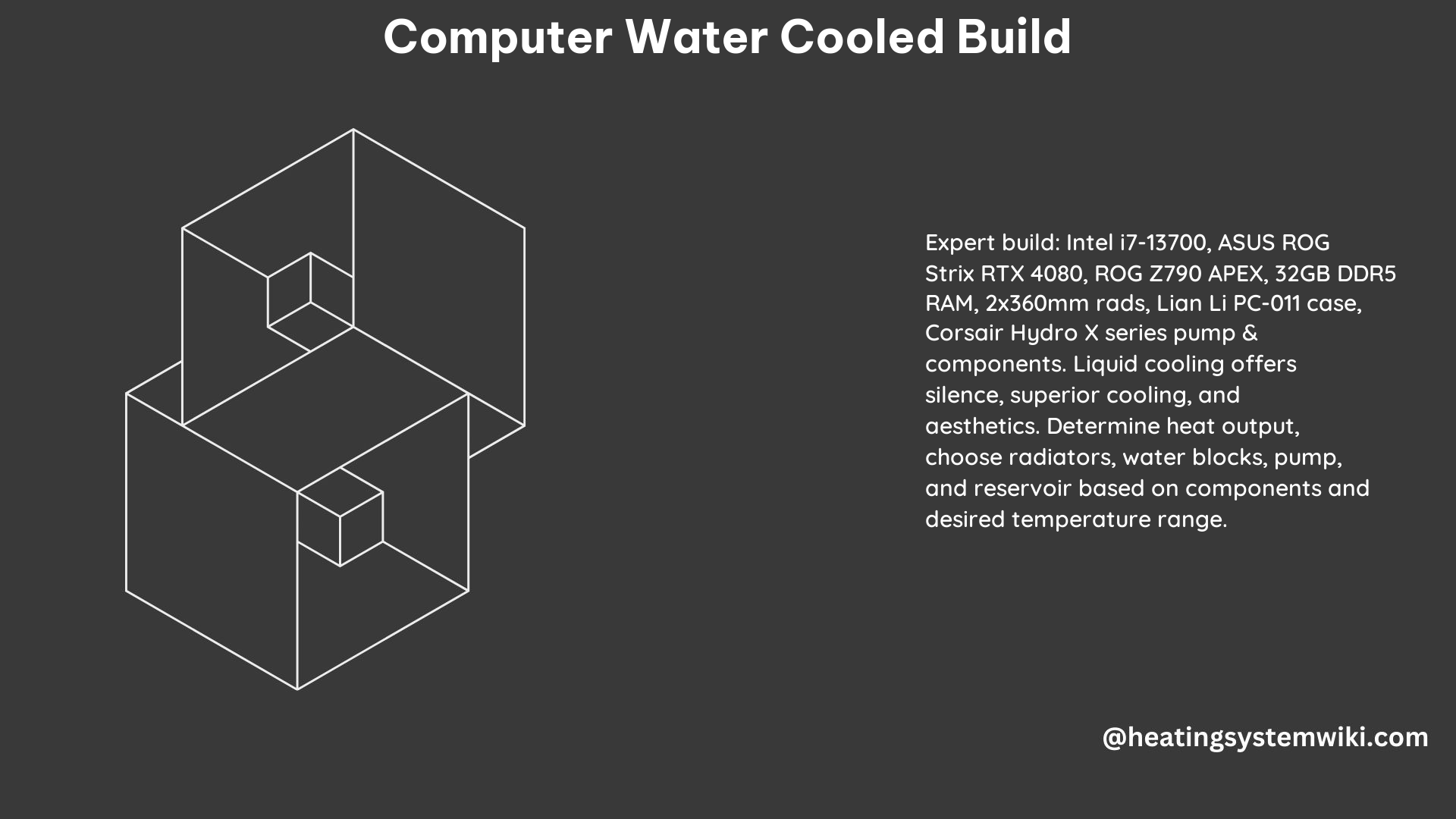A computer water-cooled build offers several advantages over traditional air-cooled systems, including reduced noise levels, superior cooling performance, and enhanced visual appeal. To create a water-cooled build, you’ll need to select the right components, such as water blocks, radiators, pumps, and tubing, and ensure they are compatible with your hardware.
Selecting the Right Components for Your Water-Cooled Build
When it comes to building a water-cooled PC, the selection of components is crucial. Let’s dive into the key elements you’ll need to consider:
Water Blocks
Water blocks are the heart of a water-cooled system, as they directly cool the CPU and GPU. When choosing water blocks, compatibility is paramount, especially for graphics cards, as different manufacturers use varying PCB (Printed Circuit Board) designs. For example, in the Black/White Water Cooled Build on builds.gg, the user opted for EK water blocks for their Nvidia GeForce GTX 1070 Armor graphics card and Intel Core i9-9900K processor.
It’s essential to research the specific water block models that are compatible with your hardware. Manufacturers like EK Water Blocks, CORSAIR, and NZXT offer a wide range of water blocks designed for various CPU and GPU models. Additionally, some water blocks come with integrated RGB lighting, allowing you to customize the aesthetics of your build.
Radiators
Radiators are responsible for dissipating the heat generated by your components. The size and number of radiators you choose will depend on the overall heat load of your system. As a general rule, a 120mm radiator per component (CPU and GPU) is a good starting point, but you may need larger or additional radiators for more powerful systems.
When selecting radiators, consider factors such as thickness, fin density, and the number of fans required. Thicker radiators (30-45mm) typically offer better cooling performance but may require more space in your case. Fin density also plays a role, with higher-density fins providing more surface area for heat dissipation.
Pumps and Reservoirs
The pump is responsible for circulating the coolant through the water-cooling loop. Choosing a high-quality pump with sufficient flow rate is crucial for efficient cooling. Pump/reservoir combos, such as the one used in the Forbes build, combine the pump and coolant reservoir into a single unit, simplifying the installation process.
When selecting a pump, consider factors like flow rate (measured in liters per minute or gallons per minute), power consumption, and noise levels. A higher flow rate generally results in better cooling performance, but it’s important to balance it with noise levels and power consumption.
Tubing and Fittings
The tubing and fittings used in your water-cooled build play a vital role in the overall system performance and aesthetics. Soft tubing, such as PVC or PETG, is easier to work with and more forgiving of bends, while rigid tubing (acrylic or PETG) offers a more polished, custom look.
When choosing tubing, consider the inner diameter (ID) and outer diameter (OD) to ensure compatibility with your fittings. Typical sizes range from 10mm to 16mm OD. Fittings come in various styles, including compression, push-to-connect, and rotary, each with their own advantages and installation requirements.
Coolant and Additives
The coolant you choose can also impact the performance and longevity of your water-cooled system. Distilled water is a common base, but you may also consider pre-mixed coolants that contain anti-corrosive and anti-algae additives. These additives help prevent the growth of bacteria and protect the metal components in your loop.
When selecting a coolant, pay attention to the recommended mixing ratios and compatibility with the materials used in your water-cooling components. Some coolants may not be suitable for certain types of tubing or metals, so it’s essential to research and follow the manufacturer’s guidelines.
Preparing for a Successful Water-Cooled Build

Before embarking on your water-cooled build, it’s crucial to ensure all components are functioning correctly and compatible with each other. This includes:
- Cleaning the Parts: Thoroughly clean all the components, especially the radiator, to remove any manufacturing residues or debris that could potentially clog the system.
- Checking Drivers and Software: Ensure that all necessary drivers and software are up-to-date for your hardware, including the motherboard, GPU, and any other components that may require specific drivers.
- Planning the Loop Layout: Carefully plan the layout of your water-cooling loop, taking into account the placement of the radiators, pump, and reservoir. This will help you determine the optimal routing of the tubing and ensure a clean, organized appearance.
During the actual installation process, be prepared for some adjustments, as unexpected challenges may arise. Patience and attention to detail are key to a successful water-cooled build.
Conclusion
A computer water-cooled build provides numerous benefits, including reduced noise levels, superior cooling performance, and enhanced visual appeal. By carefully selecting the right components, ensuring compatibility, and following best practices during the installation process, you can create a powerful, quiet, and visually stunning system that will elevate your computing experience.
Remember, building a water-cooled PC requires a higher level of technical expertise and attention to detail compared to a traditional air-cooled setup. However, with the right guidance and a willingness to learn, you can embark on this rewarding DIY project and enjoy the benefits of a custom water-cooled build.
